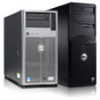Dell PowerEdge XL 5133-4 MXL 10/40GbE Switch IO Module FTOS Command Reference - Page 212
Binary Representation of Interface Index
 |
View all Dell PowerEdge XL 5133-4 manuals
Add to My Manuals
Save this manual to your list of manuals |
Page 212 highlights
www.dell.com | support.dell.com Starting from the least significant bit (LSB): • the first 14 bits represent the card type • the next 4 bits represent the interface type • the next 7 bits represent the port number • the next 5 bits represent the slot number • the next 1 bit is 0 for a physical interface and 1 for a logical interface • the next 1 bit is unused For example, the index 44634369 is 10101010010001000100000001 in binary. The binary interface index for TenGigabitEthernet 0/41 of an Aggregator is shown in Figure 16-13. Notice that the physical/logical bit and the final, unused bit are not given. The interface is physical, so this must be represented by a 0 bit, and the unused bit is always 0. These two bits are not given because they are the most significant bits, and leading zeros are often omitted. Figure 16-13. Binary Representation of Interface Index For interface indexing, slot and port numbering begins with binary one. If the Dell Force10 system begins slot and port numbering from 0, then binary 1 represents slot and port 0. In S4810, the first interface is 0/0, but in the Aggregator the first interface is 0/1. Hence, in the Aggregator 0/0s Ifindex is unused and Ifindex creation logic is not changed. Since Zero is reserved for logical interfaces, it starts from 1. For the first interface, port number is set to 1. Adding it causes an increment by 1 for the next interfaces, so it only starts from 2.Therefore, the port number is set to 42 for 0/41. Note that the interface index does not change if the interface reloads or fails over. If the unit is renumbered (for any reason) the interface index will change during a reload. 198 | Simple Network Management Protocol (SNMP)















